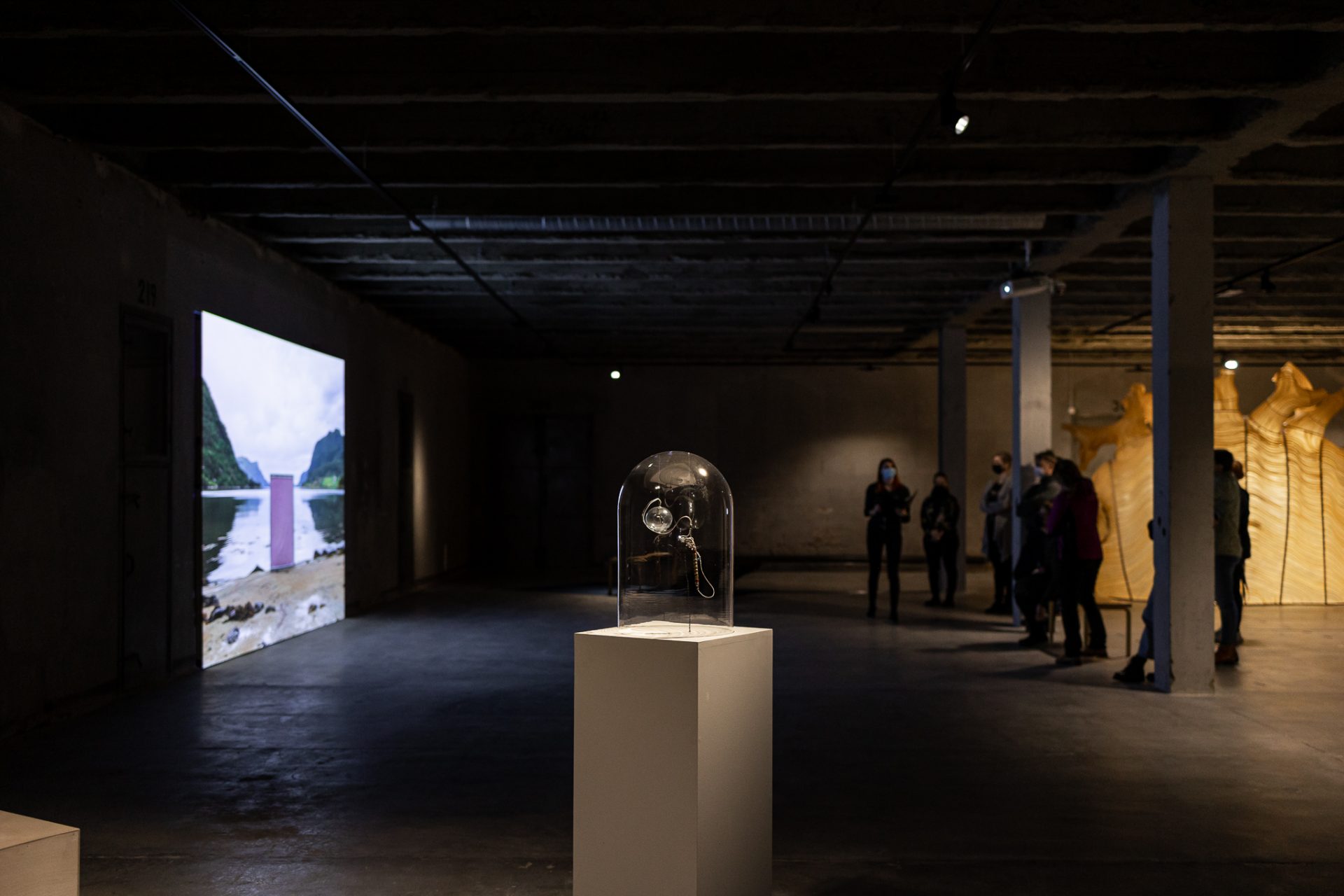1.4.2022
Panel Discussion: How can we envision the changing world through the artworks in the Criss-Crossing Ecologies exhibition?
 Wprlshop space Itikka, 2nd floor
Wprlshop space Itikka, 2nd floor
 https://link.webropol.com/s/paneldiscussion
https://link.webropol.com/s/paneldiscussion
Panel discussion is based on children art and science questions while visiting the exhibition
1.4.2022 at 5-6-pm, free entranc
When you enter the panel discussion online, we hope you close your camera and mic. There will be time to ask questions from the panelists in the end, if you want to.
In the exhibition Criss-Crossing Ecologies the research subjects of the artists lead to deeper questions than the aestheticization of the final work of art: What is coexistence like in different types of ecosystems? How do humans relate to their environment? How can we envision the changing world through these artworks? Through science, art, design and technology we are able to ponder these questions.
Kunsthalle Seinäjoki will host a panel discussion with the exhibition Criss-Crossing Ecologies artists and curators. During the spring, there will be visiting all the 10 years old pupils from the schools of Seinäjoki approx. 650 children. Kunsthalle’s exhibition guides have collected questions that the children have been pondering considering the art works or the subject of the work in the exhibition. Some of these questions will be asked from the curators and artists on the panel discussion by art curator Sanna Karimäki-Nuutinen. Artists Julia Lohmann, Leena Saarinen and Antti Tenetz are at present. So is the curators Mari Keski-Korsu and Anna Puhakka. Other artists and curators are participating through online.
The event is held at the Itikka space in the art and culture centre Kalevan Navetta and also broadcasted by teams-application as online event. You will receive the link a day before to the email you gave here. The event is held mainly in English. sign up: https://link.webropol.com/s/paneldiscussion More information: Art producer Pii Anttila, pii.anttila@seinajoki.fi

Curators Anna Puhakka, Mari Keski-Korsu and Erich Berger
Curators & Artists
Erich Berger is an artist, curator and cultural worker based in Helsinki Finland. His focus is on the intersection of art, science and technology with a critical take on how they transform society and the world at large. Throughout his practice he has explored the materiality of information, and information and technology as artistic material. Berger’s current interest in issues of deep time and hybrid ecology led him to work with geological processes, radiogenic phenomena and their socio-political implications in the here and now. He moves between visual arts and science in an area which he also investigates and develops as director of the Bioart Society in Helsinki.
Mari Keski-Korsu is a post-disciplinary artist, researcher and curator who explores how ecological changes manifest in everyday life. Her current practice for several years, is focused on inter-species communication and care to possibly enable empathy towards whole ecosystems. Since 2021, she is a doctoral candidate to study towards Doctor of Arts degree in Aalto University’s School of Arts, Design and Architecture. Within her research work, she is a member of interdisciplinary research group working in Abisko Scientific Research Station in sub-Arctic Sweden. For long, she has been collaborating with Bioart Society.
Anna Puhakka is a cross-disciplinary curator, artist and arts management professional from Finland. She is interested in alternate realities and the juxtapositioning of nature, ritual and technology. Puhakka has curated numerous exhibitions both nationally and internationally over the past 15 years. She specialises in curating site-specific artworks and has a firm understanding of curating exhibitions for children created by professional artists.
Antti Tenetz (b.1975) is a visual artist from Finland. His works are situated at the interface between media arts, biological arts and urban art. Tenetz focuses on multi-disciplinary and multi-artistic cooperation between art and science.
Brandon Ballengée (b. 1974) is a visual artist, biologist and environmental educator based in Louisiana, US. Ballengée creates transdisciplinary artworks inspired from his ecological field and laboratory research. Since 1996, a central focus of investigation has been the occurrence of developmental deformities and population declines among amphibians.
German-born designer and researcher Julia Lohmann (b. 1977) investigates and critiques the ethical and material value systems underpinning our relationship with flora and fauna.
Sweden-born Cecilia Jonsson’s (b. 1980) works are devised by strategies in which materiality, site-specific navigation and objective research methods are woven together through a personal, subjective experience of contemporary alchemy. Her projects develop as investigations of physical and ideological properties of the raw materials that form the basis of human existence: from origins deep in the earth, to the extraction, transformation and global exploitation.
Leena Saarinen (b. 1988) is a visual artist based in Helsinki, Finland. Her practice is multidisciplinary and research based. She works with questions of posthumanism in the age of climate change and mass extinctions. In her work she studies culture, language and the relationship between human and non-human species.
Aiming to make art that openly engages with the world, Soichiro Mihara (b.1980) creates systems that employ a wide range of materials, media, and technologies, such as acoustics, bubbles, radiation, rainbow, microbes, moss, air streams, soil and electrons in order to continually question the here and now.

View of the Criss-Crossing Ecologies exhibition at Kunsthalle Seinäjoki. Photo: Katariina Vestergård






